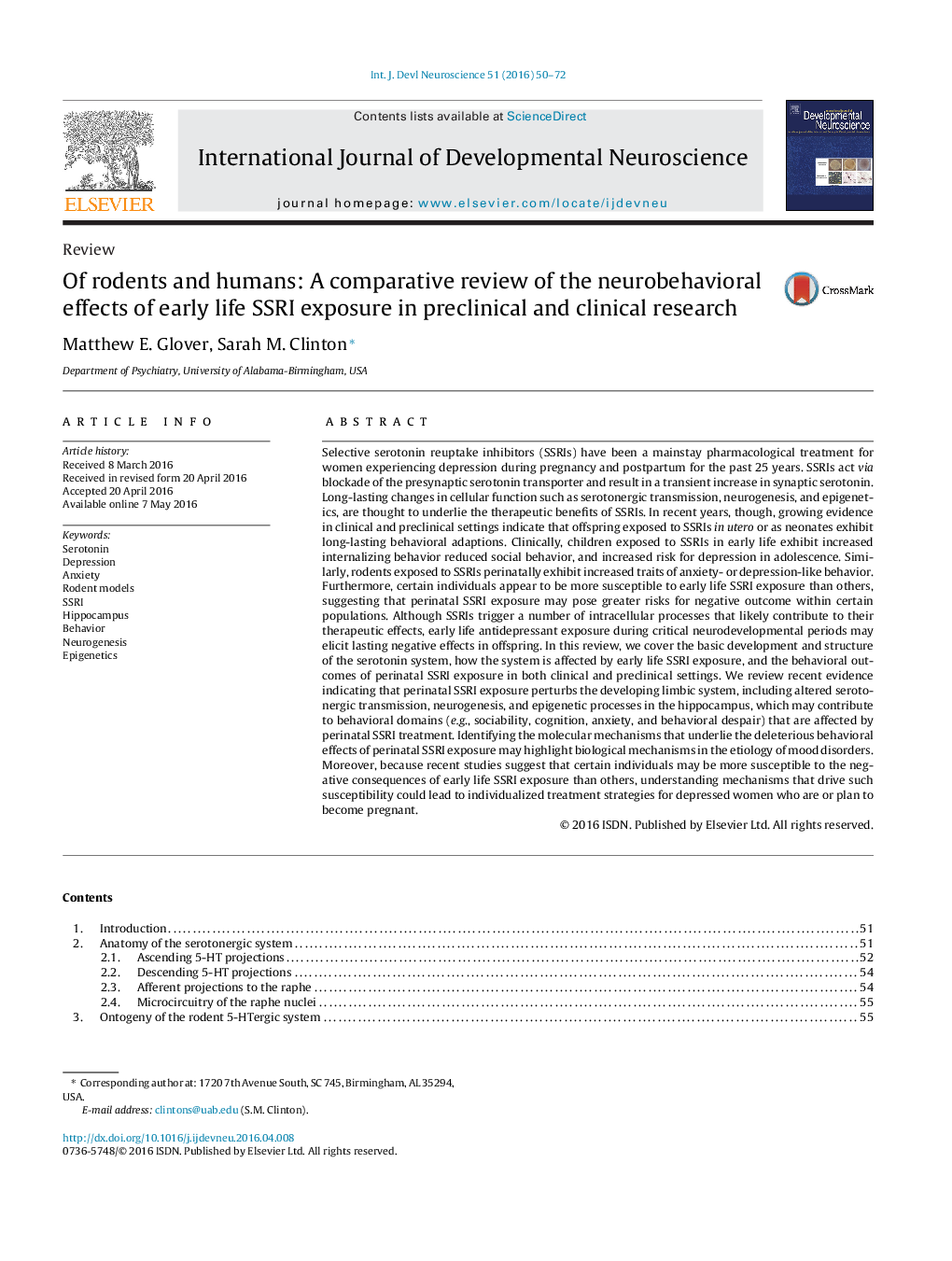| Article ID | Journal | Published Year | Pages | File Type |
|---|---|---|---|---|
| 2785601 | International Journal of Developmental Neuroscience | 2016 | 23 Pages |
•Children exposed to SSRI antidepressants in early life display changes in affective behavior, such as increased anxiety and depression-like behaviors and increased risk for autism. This review summarizes the known effects of early life SSRI exposure in humans and rodents and highlights molecular mechanisms that may mediate its deleterious effects on brain and behavior.•Rodent studies indicate that early life SSRI exposure impairs normal brain development, with long lasting changes observed in 5-HTergic tone, hippocampal neurogenesis, and epigenetic programming.•Emerging evidence suggests that certain children may be at greater risk for developing mood disorders following early life antidepressant drug exposure, although the biological underpinnings of this effect are unknown.•Such findings are important for developing individualized treatment strategies for depressed women who are or plan to become pregnant.
Selective serotonin reuptake inhibitors (SSRIs) have been a mainstay pharmacological treatment for women experiencing depression during pregnancy and postpartum for the past 25 years. SSRIs act via blockade of the presynaptic serotonin transporter and result in a transient increase in synaptic serotonin. Long-lasting changes in cellular function such as serotonergic transmission, neurogenesis, and epigenetics, are thought to underlie the therapeutic benefits of SSRIs. In recent years, though, growing evidence in clinical and preclinical settings indicate that offspring exposed to SSRIs in utero or as neonates exhibit long-lasting behavioral adaptions. Clinically, children exposed to SSRIs in early life exhibit increased internalizing behavior reduced social behavior, and increased risk for depression in adolescence. Similarly, rodents exposed to SSRIs perinatally exhibit increased traits of anxiety- or depression-like behavior. Furthermore, certain individuals appear to be more susceptible to early life SSRI exposure than others, suggesting that perinatal SSRI exposure may pose greater risks for negative outcome within certain populations. Although SSRIs trigger a number of intracellular processes that likely contribute to their therapeutic effects, early life antidepressant exposure during critical neurodevelopmental periods may elicit lasting negative effects in offspring. In this review, we cover the basic development and structure of the serotonin system, how the system is affected by early life SSRI exposure, and the behavioral outcomes of perinatal SSRI exposure in both clinical and preclinical settings. We review recent evidence indicating that perinatal SSRI exposure perturbs the developing limbic system, including altered serotonergic transmission, neurogenesis, and epigenetic processes in the hippocampus, which may contribute to behavioral domains (e.g., sociability, cognition, anxiety, and behavioral despair) that are affected by perinatal SSRI treatment. Identifying the molecular mechanisms that underlie the deleterious behavioral effects of perinatal SSRI exposure may highlight biological mechanisms in the etiology of mood disorders. Moreover, because recent studies suggest that certain individuals may be more susceptible to the negative consequences of early life SSRI exposure than others, understanding mechanisms that drive such susceptibility could lead to individualized treatment strategies for depressed women who are or plan to become pregnant.
